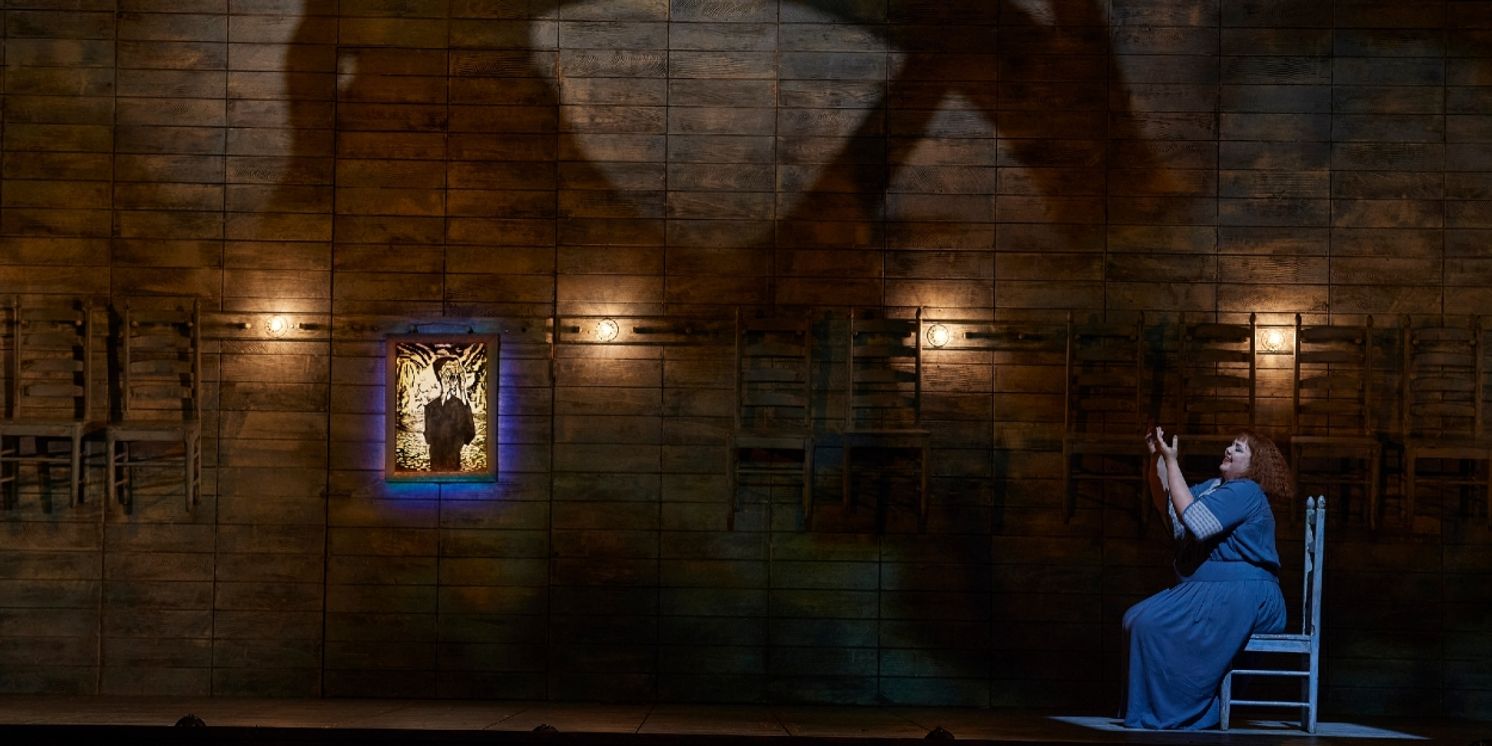Review: THE FLYING DUTCHMAN is a Haunting, Stunning Retelling of The Classic Folk Tale
The COC production returns to the stage, running through October 23

The Canadian Opera Company's 2010 production of Wagner's THE FLYING DUTCHMAN has sailed back to the Four Seasons Centre for the Performing Arts' stage. Originally directed by Christopher Alden, this production sees Marilyn Gronsdal take the helm.
The plot is simple in the way many fables and fairytales are. Cursed to remain alive and at sea, the Dutchman (Johan Reuter) is doomed to never return to his homeland. He's only able to go ashore once every seven years to look for a woman to marry, and only if her love is true will his curse be broken. He's lucky enough to meet the friendly captain Daland (Franz-Josef Selig), who agrees that he'll exchange his daughter Senta's (Marjorie Owens) hand in marriage for the treasures of the Dutchman's ship.
On shore, Senta has become fixated with the legend of the Dutchman, going so far as to carry a painting of him around with her. To the dismay of her would-be suitor Erik (Christopher Ventris) she longs to marry him to help free him from the curse. When the opportunity to do just that walks through her door, the result is a tumultuous storm of events that leads to Senta and the Dutchman's near-marriage, their falling out, and a sacrifice.
This production's cast is well rounded and complementary throughout, with strong performances also from the supporting cast and chorus. Reuter is a haunting Dutchman, with a strong baritone register that soars even when his character is at his lowest. Not only is his singing on point, but he portrays the cursed captain with a heaviness that helps solidify the idea that he's been stuck at sea for decades, if not centuries.
In the role of Senta, Owens is superb. Her voice adapts as needed to the more demanding aspects of the role without losing the softness that is innate to her character. In terms of acting, she's also a strong actor, working well either with her physical co-stars and even with nothing more than a painting. Selig is a multi-faceted Daland, balancing both the captain's greed and his love for his daughter in equal measure. The final act sees him resigned far before the curtain falls, which begs the question - does Daland grieve the loss of his promised treasure, or does he already know the fate that awaits his daughter? Regardless, Selig gives a great performance across all aspects of the role.
Ventris is a great Erik - steadfast in his devotion to Senta, what starts as a seeming former flame begins to look more and more like obsession as his fixation on her increases. Ventris' voice is clear, precise, and carries the emotion and madness of Erik through to the final scenes. With the COC Chorus taking on the roles of the sailors and the working women, there are several rousing group numbers that really sell the environment that THE FLYING DUTCHMAN is set in. The use of props and stomping in multiple numbers carry the idea of sea-shanties and working songs from a simple performance to something highly engaging, especially the scene in the women's workroom led by Mary, their boss (Rosie Aldridge).
Leading the orchestra through Wagner's melodic score is conductor Johannes Debus. The performance opens with an emotive suite of music to be performed throughout the show, and really sets the tone. Debus and the orchestra are similar to the cast, in that they triumph in balancing the harsh with soft and the loud with quiet in the just over two hours' long production.
The most striking, and potentially most impressive part of the entire production is the set (set and costume design by Allen Moyer). The crooked, wood-panelled box serves as the deck of a ship, with exposed beams below used effectively at several points. A massive wheel is multipurpose as the wheel of a ship and a part of a spinning wheel, and the added movement and shadows created by it in motion makes for some dynamic moments. Lighting (lighting design by Anne Militello) is essential in separating locations and setting the tone. Kept minimal to align with the set, there are times when the lighting (or lack thereof) seems like a secondary storyteller, lighting certain characters and keeping others in the dark to tell the story of our main characters as well as hint at those not named, but essential to the world of the Dutchman.
It's great that this visual masterpiece has returned to the stage after over a decade since its debut for new and returning audiences to enjoy. With a cast and crew as strong as this, it's an all-around spectacle to experience. If nothing else, the staging and visual design of the production is well worth the price of admission - thankfully though, the cast rise to the occasion to deliver a haunting story that lives up to the legend of the Flying Dutchman itself.
The Canadian Opera Company's THE FLYING DUTCHMAN runs through October 23 at the Four Seasons Centre for the Performing Arts, 145 Queen St W, Toronto.
Photo credit: Michael Cooper
Reader Reviews
Videos

